Rest of the World: Foreign Players in the Football League
After looking at players from specific countries and regions, it is now time to cover the ‘rest of the world’. Over its long history, the Football League has seen sporadic arrivals from across the globe. While the bulk of imports have naturally come from Europe, and a number from the Americas, there have been representatives from Africa to Asia, Australia and New Zealand to Israel and the Caribbean.
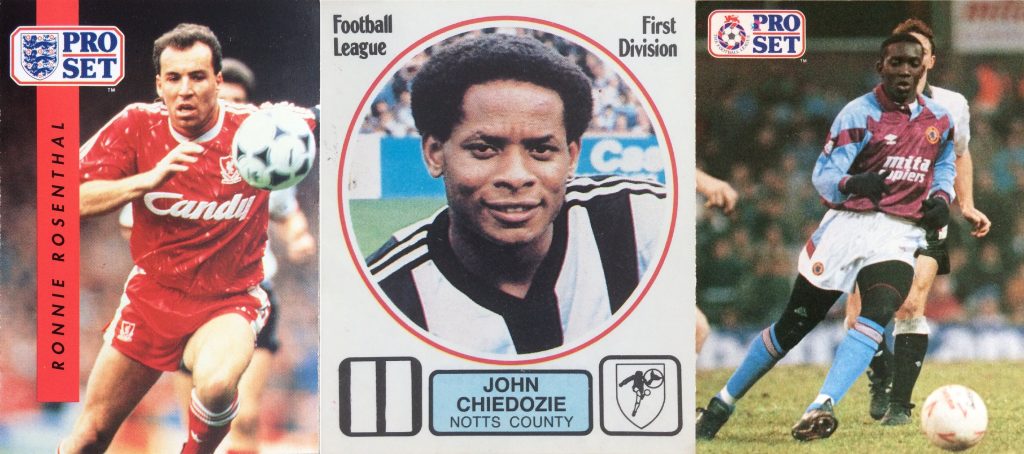
The league’s notoriously rigid transfer restrictions were often relaxed for Commonwealth citizens, opening the door for an influx of South Africans in particular after the Second World War. Charlton under manager Jimmy Seed were active in recruiting from South Africa, bringing in three of their most notable players in Eddie Firmani, John Hewie and Stuart Leary. Firmani left Charlton in a then-British record transfer to Sampdoria in 1955, winning Italian national team caps and then returning to The Valley for further spells as player and manager. Hewie made over 500 appearances for Charlton and represented Scotland, the country of his father’s birth, at the 1958 World Cup. Leary meanwhile became Charlton’s record goalscorer, played county cricket for Kent and was only prevented by an FA ruling from adding to a single England under-23 cap. All three have been inducted into the club’s Hall of Fame.
Elsewhere, South African-born Bill Perry did qualify for England, earning three caps and scoring the winner for Blackpool in the ‘Matthews’ FA Cup Final of 1953. Eddie Stuart won three league titles and an FA Cup with Wolves. Berry Nieuwenhuys played for Liverpool from 1933, winning the 1946/47 league title in his final season. The first black South African to play in England was Steve Mokone, at Coventry City of the Third Division (South) in 1956, soon to move on to the Netherlands and returning briefly to Cardiff and Barnsley in an itinerant career. Mokone was followed by Gerry Francis, who paid his own way from South Africa and joined Leeds in 1957. Francis in turn paved the way for winger Albert Johanesson’s arrival at Elland Road in 1961. Johanneson helped Leeds win promotion before becoming the first black player to appear in an FA Cup Final in a 1965 Wembley defeat by Liverpool.

Above: Stuart Leary – Berry Nieuwenhuys – Eddie Stuart
Below: Steve Mokone – Albert Johanesson – Emment Kapengwe & Freddie Mwila

These players added to an existing history of African players in the Football League, which is believed to have begun with Arthur Wharton. Born in the Gold Coast (now Ghana), goalkeeper Wharton’s career took in Darlington and Preston before making his first league appearances in the late 1880s for Rotherham Town. Egyptian Hussein Hegazi was at Dulwich Hamlet in 1911, playing (and scoring) in a single league game for Fulham the same year. Hegazi’s compatriot and Olympic team-mate Tewfik Abdullah joined First Division Derby County in 1920, also scoring on his debut, before spending time in the lower divisions and then joining an exodus of players to the American Soccer League (ASL) in 1924.
Post-Second World War, Teslim ‘Tesi’ Balogun made an impression as the Football League’s first Nigerian at QPR in the late 1950s, as did his compatriot Elkanah Onyeali at Tranmere a few years later. Another Nigerian, speedy winger John Chiedozie starred for Orient, Notts County and Spurs from the late 1970s through to the mid-80s before struggling with injuries. Chiedozie’s Notts County team-mate Rachid Harkouk, London-born and previously of Crystal Palace and QPR, played for Algeria at the 1986 World Cup. More typical were the fleeting appearances that Zambia’s Emment Kapengwe and Freddie Mwila made for Aston Villa after being signed by Tommy Docherty in 1969. Goalkeeper Roch Karaa was the league’s first Tunisian when making a single appearance for Darlington in 1985.
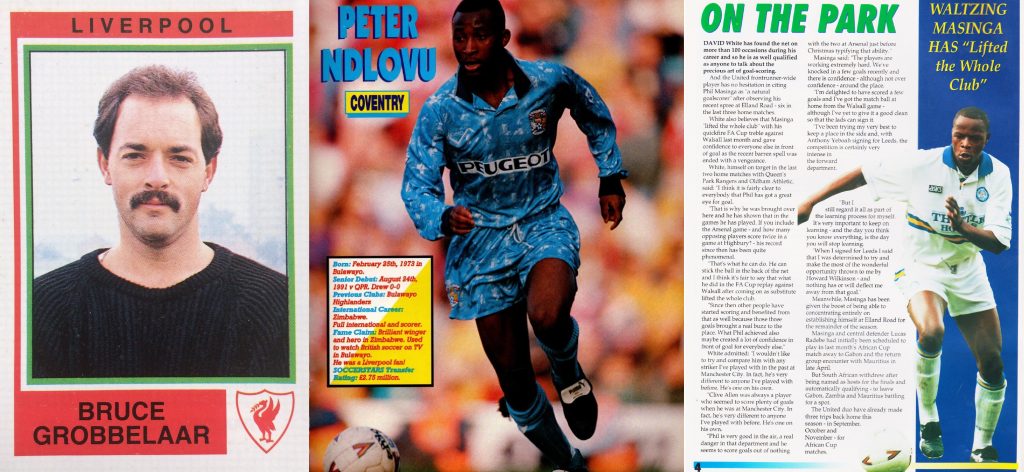
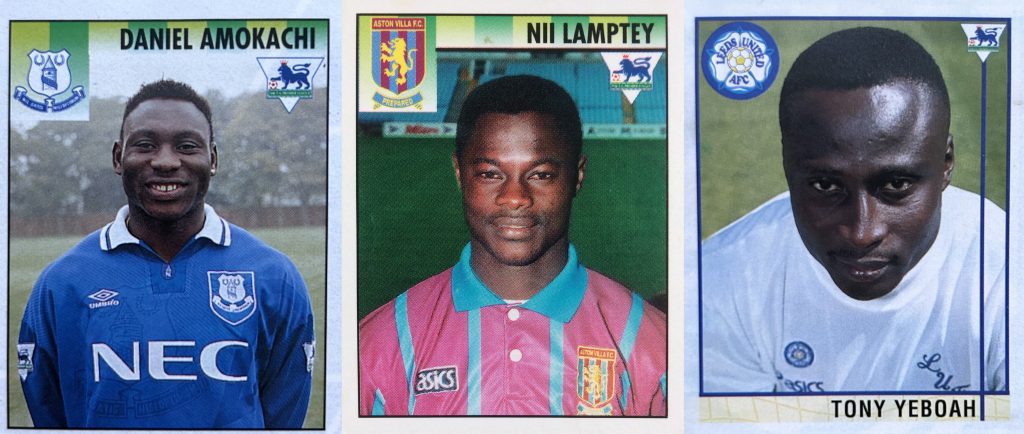
In the 1990s, South Africans Lucas Radebe and Philomen Masinga followed Francis and Johanesson at Leeds, alongside Ghanaian striker Tony Yeboah, scorer of some of the Premier League’s most spectacular goals. Zimbabwe’s Bruce Grobbelaar had been a fixture as Liverpool goalkeeper for over a decade since arriving at Anfield in 1981, after an earlier loan spell at Crewe. His compatriot Peter Ndlovu made a name for himself at Coventry in the early 90s before moving on to Birmingham and Sheffield United. Ndlovu became both the first African to play and score in the Premier League, and later registered a historic hat-trick at Anfield in March 1995 – the first by a visiting player for 33 years. Ghana’s teenage star Nii Lamptey, arriving from PSV Eindhoven, failed to establish himself at either Aston Villa or Coventry. Daniel Amokachi was signed by Everton for £3m after impressing for Nigeria at the 1994 World Cup but had less of an impact at Goodison Park in a two-year stay.
Before Mokone, Francis and Johanneson, a young black player from Jamaica, Lloyd ‘Lindy’ Delapenha, was part of a Portsmouth squad which won back-to-back league titles at the end of the 1940s. Delapenha had arrived in England as an 18-year-old at the end of 1945 and enlisted in the army before beginning a professional career that saw him move on to Middlesbrough in 1950 for over 250 appearances, ending his league career at Mansfield. Perhaps the best remembered Caribbean pioneer is Bermudan striker Clyde Best, who made his debut for West Ham in 1969 at the age of 18 and remained at the club until 1975.

Clyde Best – Brendon Batson – Dwight Yorke
Other players from the Caribbean continued to contribute to the Football League throughout the 1970s and 80s, with Brendon Batson (born in Grenada) establishing a long career in England with Arsenal, Cambridge and West Brom. Fellow full-back Ces Podd, born in Saint Kitts & Nevis, made a record number of appearances for Bradford City between 1970 and 1984. From Trinidad & Tobago, Dwight Yorke made his debut as a teenager with Aston Villa in 1990 and eventually left for Manchester United in a £12.6m transfer in 1998, winning multiple trophies at Old Trafford. Meanwhile players from Mexico and Central America didn’t begin to arrive until into the Premier League era.
Australia provided surprisingly few Football League players, with English-born Adrian Alston at Luton in the mid-1970s a rare example, followed by John Kosmina at Arsenal (joining in March 1978). Among the league’s Australian players during the 1980s were Alan Davidson, Andy Bernal, Jason Kearton, Dave Mitchell and Andy Petterson. Goalkeeper Mark Bosnich, initially at Manchester United (who he would later rejoin) was a notable success for Aston Villa but few of his countrymen made a major impression until a later generation. New Zealand too historically was rarely a source of players – though when Norwich attempted to sign Wynton Rufer in 1982, they were denied a work permit only for the striker to later flourish with Werder Bremen. Kiwi players who did appear in the Football League included Ricki Herbert, Declan Edge, Ceri Evans, Harry Ngata, Jon Rush and Chris Zoricich.
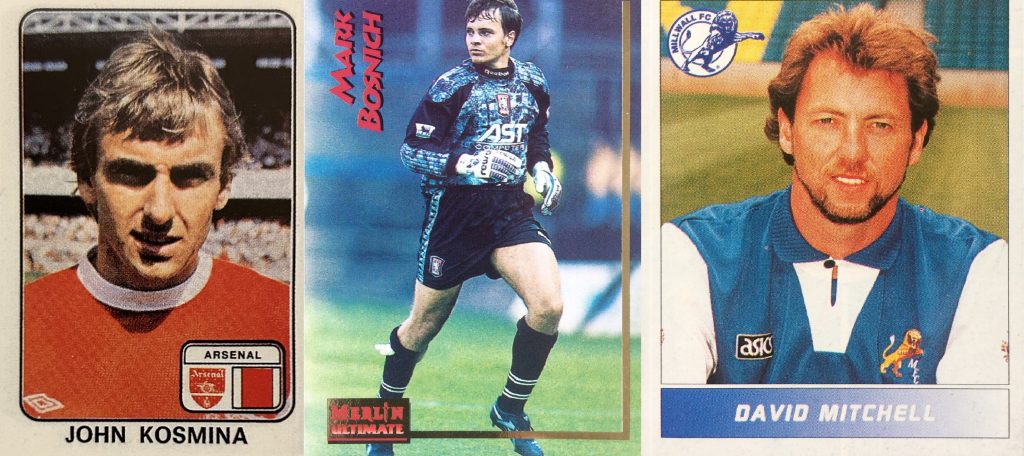
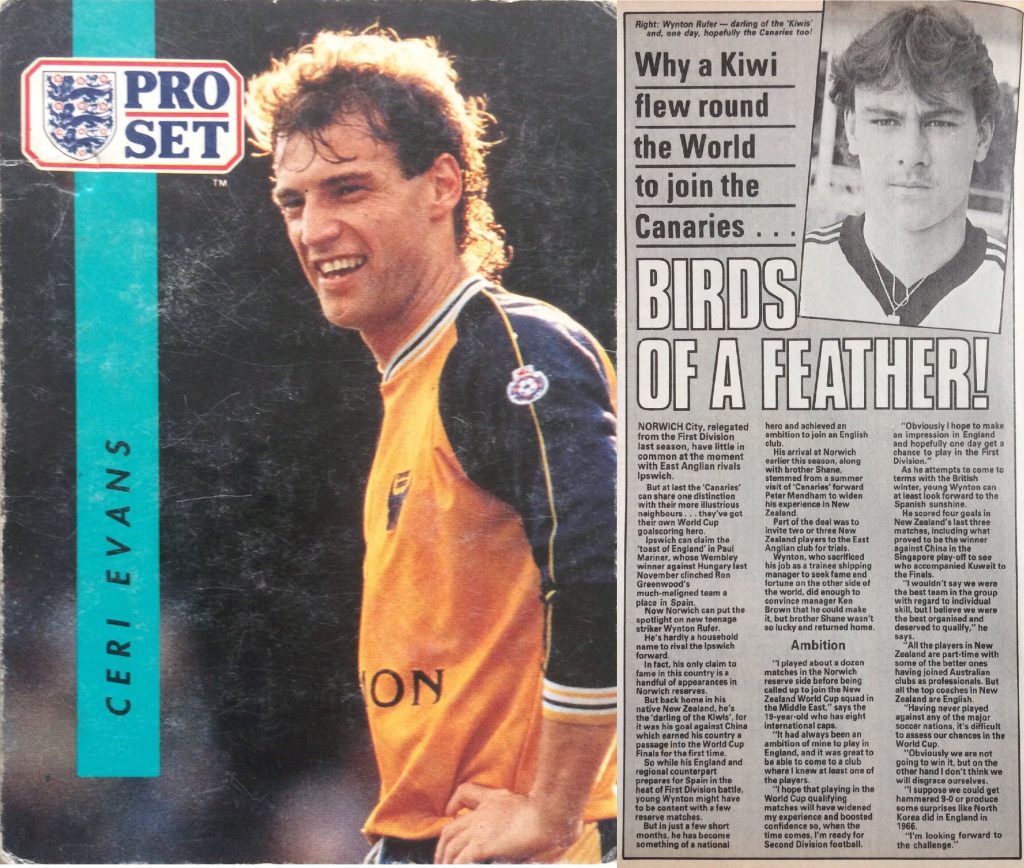
The ‘rest of the world’ has been represented since the late 1970s by Israel, when Avi Cohen signed for Liverpool from Maccabi Tel Aviv – he later re-joined Graeme Souness at Rangers in 1987. Throughout the 1980s, Jacob Cohen and Moshe Gariani (at Brighton), Aharon Fadida (Aldershot) and David Pizanti (QPR) all had short stays in England. Ronnie Rosenthal arguably made the biggest impact, initially joining Liverpool on loan in 1990 when he helped them to the league title, before further spells at Spurs and Watford. Another Israeli striker, Eli Ohana, was linked with Liverpool in 1984 but instead enjoyed success with Mechelen in Belgium.
The wider Middle East and Asia were otherwise largely unknown territory for English clubs until the Premier League began, though Iran’s 1978 World Cup goalkeeper Nasser Hejazi spent time training with Manchester United later that year before the move fell through. Not until 2000 was there an Iranian player in England, Karim Bagheri appearing briefly for Charlton in an unhappy loan stay. Hong Kong-born Cheung Chi Doy played at Blackpool at the start of the 1960s but he was another isolated example. In 1998 Crystal Palace made a double signing of Sun Jihai (later of Manchester City and Sheffield United) and Fan Zhiyi, China’s first Football League players. Three years later the first Japanese representatives followed, Junichi Inamoto (Arsenal) and Akinori Nishizawa (Bolton).
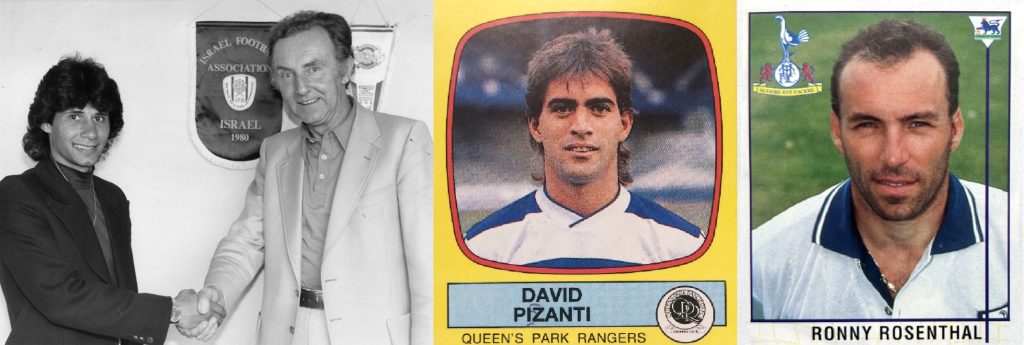
Moshe Gariani (L) – David Pizanti – Ronnie Rosenthal
Several images courtesy of Peter Lythe, Miles McClagan (Flickr & twitter @TheSkyStrikers) & Shahan Petrossian (Soccer Nostalgia).
The arrival of foreign players to the Football League from across the world is one of the topics discussed in my book Before the Premier League: A History of the Football League’s Last Decades.